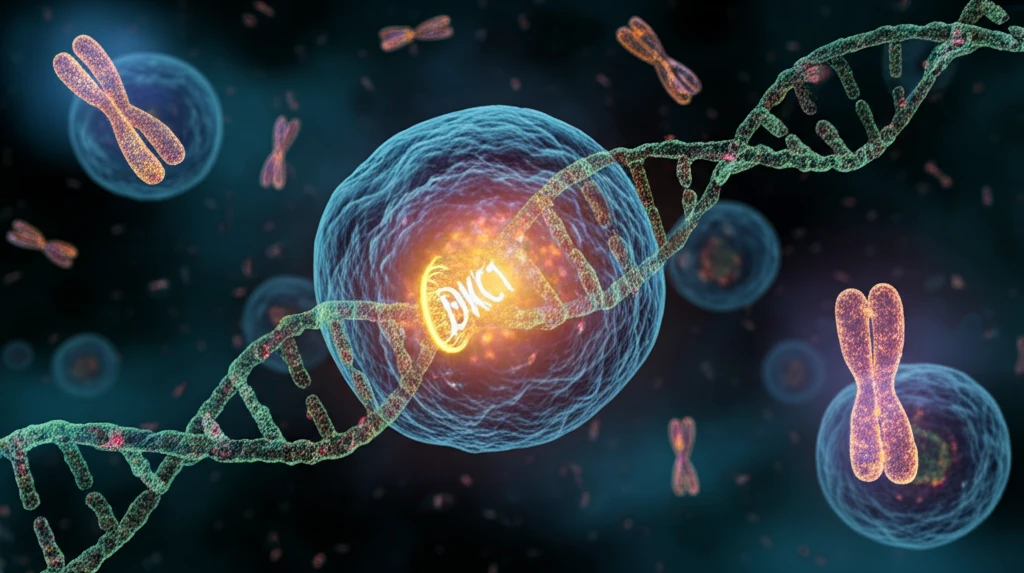
Unraveling DKC1: The Gene That Holds Secrets to Aging and Disease
"Exploring the multifaceted role of the DKC1 gene in dyskeratosis congenita, cancer, and the fundamental processes of cell function."
In the realm of genetics, certain genes hold keys to understanding not only rare diseases but also fundamental biological processes. One such gene is DKC1, which stands for dyskeratosis congenita 1. DKC1 plays a crucial role in maintaining the health and stability of our cells, and when it malfunctions, it can lead to a range of health issues, including a rare genetic disorder called dyskeratosis congenita (DC).
Dyskeratosis congenita is characterized by a triad of symptoms: abnormal skin pigmentation, nail dystrophy, and oral leukoplakia (white patches in the mouth). However, the impact of DC extends far beyond these visible signs, affecting the bone marrow, lungs, and other vital organs. At the heart of this complex disorder lies the DKC1 gene, which provides instructions for making a protein called dyskerin.
This article aims to unravel the multifaceted role of DKC1, exploring its function, the consequences of its mutations, and its implications for both rare diseases and broader health concerns like cancer. By understanding DKC1, we gain insights into the intricate mechanisms that govern cellular health and the delicate balance that, when disrupted, can lead to disease.
What is Dyskerin and Why Is It Important?

Dyskerin, the protein produced by the DKC1 gene, is a vital component of the cellular machinery responsible for maintaining and processing RNA, particularly ribosomal RNA (rRNA). Ribosomes, essential for protein synthesis, rely on properly processed rRNA to function correctly. Dyskerin is a core component of the H/ACA ribonucleoprotein (RNP) complex, which guides the modification of specific uridines to pseudouridines in rRNA. This modification is crucial for the stability and function of ribosomes.
- Ribosome Biogenesis: Dyskerin is essential for the creation of ribosomes, the protein factories of the cell.
- Telomere Maintenance: It helps maintain the protective caps on the ends of chromosomes, which are crucial for cell longevity.
- Centromere Function: Dyskerin is also implicated in the function of centromeres, which are essential for proper chromosome segregation during cell division.
The Future of DKC1 Research
Ongoing research continues to shed light on the intricate functions of DKC1 and dyskerin. Scientists are exploring the precise mechanisms by which dyskerin contributes to telomere maintenance and ribosome biogenesis, as well as investigating potential therapeutic strategies for dyskeratosis congenita and related conditions. Understanding the nuances of DKC1 function may also provide insights into the development of age-related diseases and cancer. As we continue to unravel the mysteries of this critical gene, we move closer to developing more effective treatments and preventative measures for a range of health challenges.
